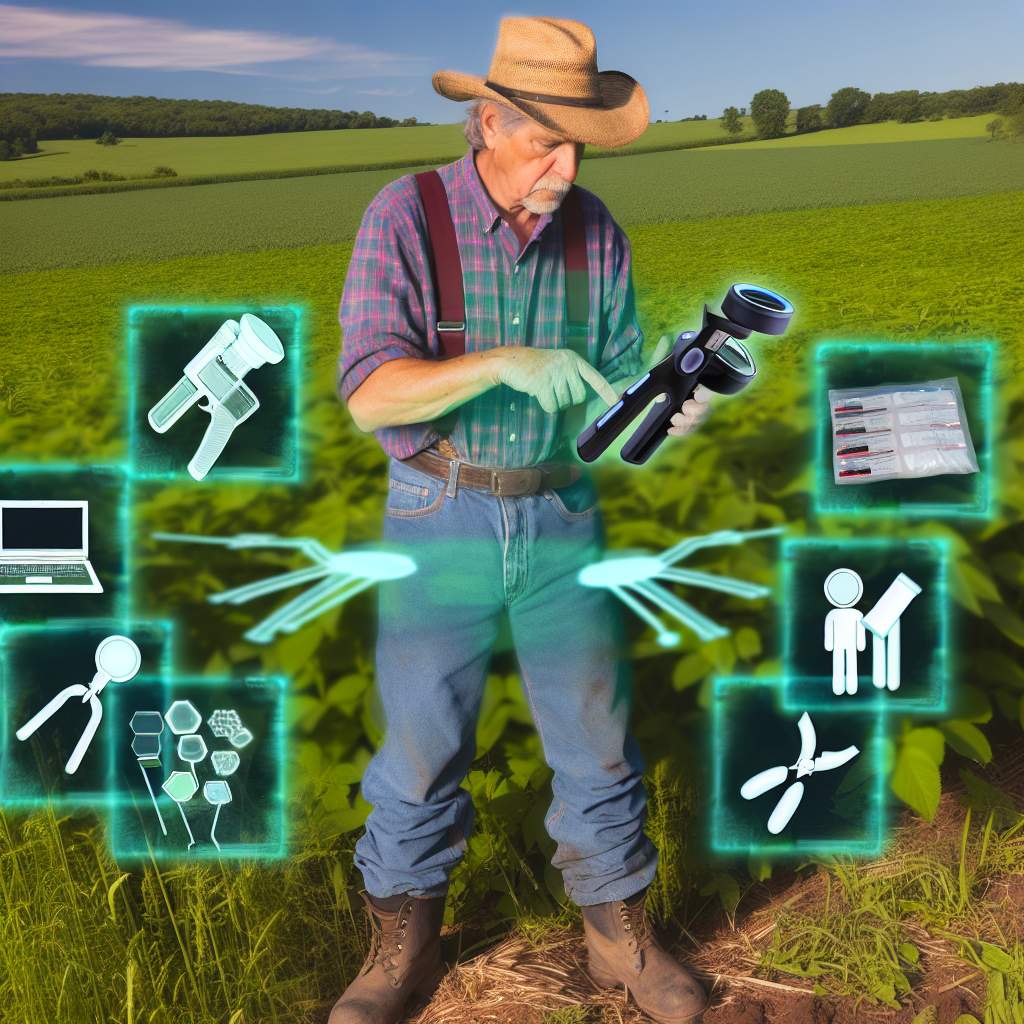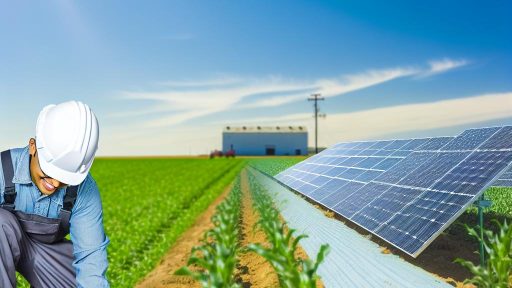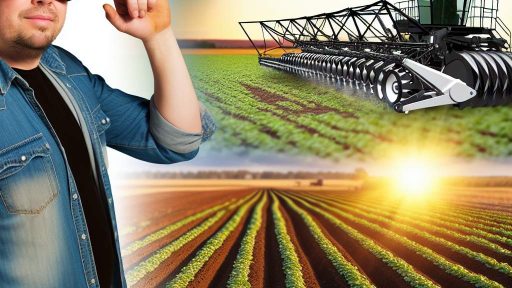Understanding Crop Diseases
An Overview of Common Agricultural Threats
Crop diseases pose significant challenges to farmers worldwide.
They can severely impact yields and crop quality.
Understanding these threats is crucial for effective management.
Types of Crop Diseases
Various types of crop diseases exist, each affecting plants differently.
Fungal diseases are among the most common agricultural threats.
These diseases can cause rot, wilting, and leaf spots.
Next in line are bacterial diseases, which can spread rapidly.
They often lead to lesions and stunted growth.
Viruses also threaten crops, causing deformation and discoloration.
Common Symptoms of Crop Diseases
Identifying symptoms early can help mitigate crop loss.
Look for yellowing leaves as a primary indicator.
Stunted growth is another alarming sign of disease.
Additionally, wilting and premature dropping of leaves should raise concerns.
Lastly, unusual spots or patches may indicate a serious issue.
The Impact of Crop Diseases on Agriculture
Crop diseases can lead to significant economic losses.
Transform Your Agribusiness
Unlock your farm's potential with expert advice tailored to your needs. Get actionable steps that drive real results.
Get StartedFarmers often face reduced yields due to infections.
Furthermore, these diseases can escalate management costs.
Consequently, effective disease management is essential for sustainability.
It protects not only farmers but also the global food supply chain.
Criteria for Selecting Disease Detection Tools
Key Considerations for Farmers
Choosing the right disease detection tools is essential for effective farming.
Farmers must consider various key factors during the selection process.
The accuracy of the tool is a fundamental criterion.
High accuracy reduces false positives and negatives.
Additionally, farmers should evaluate the tool’s ease of use.
A user-friendly design enhances efficiency in identifying diseases.
Next, consider the speed of detection.
Fast results can significantly impact timely intervention.
Moreover, the cost of the tool plays a crucial role.
A budget-friendly option helps farmers maintain financial viability.
Integration with Existing Systems
Another important aspect is compatibility with current farming practices.
The tool should integrate smoothly with existing agricultural systems.
This avoids disruptions and enhances operational efficiency.
Farmers should also assess the level of technical support available.
Reliable customer support can aid in troubleshooting and training.
Scalability and Future-Proofing
It’s vital to choose tools that scale with your operation.
As farms grow, the technology should adapt to increased demands.
Furthermore, consider the tool’s adaptability to emerging diseases.
The ability to update software or hardware ensures long-term usability.
User Feedback and Reviews
Researching user feedback is another practical step.
Showcase Your Farming Business
Publish your professional farming services profile on our blog for a one-time fee of $200 and reach a dedicated audience of farmers and agribusiness owners.
Publish Your ProfileReviews from other farmers provide insights into performance and reliability.
This real-world information can inform your decision-making process.
Lastly, hands-on trials may offer invaluable experience.
Testing the tool in your specific environment can yield significant benefits.
Types of Crop Disease Detection Tools
Visual Inspection
Visual inspection remains the simplest method for detecting crop diseases.
This practice involves examining plants for visible signs of disease.
Farmers often utilize this method due to its low cost and accessibility.
However, it requires experience to identify subtle signs accurately.
In addition, visual inspection can miss early-stage diseases that are not yet visible.
Soil Testing Kits
Soil testing kits provide essential information about soil health.
They help farmers detect nutrient deficiencies and pH imbalances.
Furthermore, these kits can reveal the presence of disease-causing pathogens.
However, soil testing can be time-consuming and may require specialized knowledge.
Also, results may vary based on sample collection methods.
Remote Sensing Technologies
Remote sensing technologies offer advanced options for disease detection.
Drones and satellite imagery can monitor large areas quickly.
These tools utilize multispectral sensors to identify plant stress.
Consequently, they can detect diseases before visible symptoms appear.
Nevertheless, the high cost of these technologies may be prohibitive for some farmers.
Mobile Applications
Mobile applications have emerged as handy tools for disease diagnosis.
Farmers can upload photos of their crops to receive instant feedback.
Many apps use machine learning to improve accuracy over time.
However, access to smartphones may limit their usability in certain areas.
Additionally, reliable internet connectivity remains a necessity for their effective use.
Laboratory Analysis
Laboratory analysis provides the most accurate diagnosis for crop diseases.
Farmers send samples to laboratories to identify pathogens and issues.
This process helps ensure precise treatment plans are implemented.
Nonetheless, it often involves high costs and longer turnaround times.
Moreover, finding local laboratories may pose a challenge in some regions.
Combination Approaches
A combination of methods can optimize disease detection capabilities.
Farmers often combine visual inspections with technology tools.
Using multiple approaches can lead to better-informed decisions.
However, managing various tools can be complex and resource-intensive.
Through integrated strategies, farmers can enhance their disease management efforts.
Learn More: How Automated Machinery Enhances Crop Yields
Technology in Disease Detection: Exploring Remote Sensing and Imaging Techniques
Introduction to Remote Sensing
Remote sensing revolutionizes how farmers detect crop diseases.
This technology collects data from a distance using sensors.
Farmers can monitor large fields without direct access.
It provides timely information for better decision-making.
Types of Remote Sensing Technologies
There are several types of remote sensing technologies available.
Showcase Your Farming Business
Publish your professional farming services profile on our blog for a one-time fee of $200 and reach a dedicated audience of farmers and agribusiness owners.
Publish Your ProfileSatellite imagery captures large-scale agricultural data.
Drones offer high-resolution images for localized assessments.
Aerial photography is also effective for monitoring crop health.
Each technology has unique advantages and challenges.
Imaging Techniques in Disease Detection
Imaging techniques complement remote sensing in disease detection.
Multispectral imaging captures light at different wavelengths.
This method helps identify stress and disease in plants.
Thermal imaging detects temperature variations in crops.
These variations often indicate underlying health issues.
Benefits of Remote Sensing and Imaging
Utilizing these technologies enhances crop management efficiency.
Farmers can detect diseases early and respond promptly.
This proactive approach minimizes crop losses and increases yields.
Additionally, these tools reduce the need for chemical treatments.
Choosing the Right Tool
Selecting the right tools depends on various factors.
Consider the size of your farm and types of crops grown.
Analyze your budget and technological expertise as well.
Consult with experts in agricultural technology for recommendations.
Evaluate the specific needs of your farming operation.
Explore Further: Best Practices For Using Imaging Technology In Crop Disease Detection
Integrating Soil Health Monitoring with Disease Detection
A Comprehensive Strategy
Integrating soil health monitoring enhances disease detection capabilities.
This holistic approach improves crop health and resilience.
Farmers can use this strategy to address multiple challenges.
Understanding Soil Health
Soil health refers to the soil’s ability to support plant growth.
Healthy soil fosters beneficial microorganisms and nutrients.
Monitoring soil health provides insight into potential issues.
Importance of Disease Detection
Disease detection in crops is vital for maintaining yields.
Early identification of diseases leads to timely interventions.
This minimizes crop loss and protects economic investments.
Connecting Soil Health and Disease Detection
Soil health directly influences plant immunity to diseases.
Healthy soils promote stronger plants that resist pathogens.
Integrating monitoring tools helps identify weaknesses.
Tools for Monitoring Soil Health
Several tools are available for monitoring soil health effectively.
- Soil moisture sensors provide real-time data.
- pH meters help assess soil acidity levels.
- Nutrient testers evaluate essential nutrient availability.
Tools for Disease Detection
Effective disease detection tools are essential for farmers.
- Remote sensing technology scans fields for anomalies.
- Field scout tools allow hands-on inspection.
- Diagnostic kits aid in identifying specific pathogens.
Building a Holistic Approach
Combining soil health monitoring and disease detection enhances farming strategies.
Farmers should adopt a proactive mindset towards crop management.
This integrated system reduces risks associated with crop diseases.
Ultimately, it leads to healthier crops and better yields.
Explore Further: Enhancing Food Safety With Blockchain In Agricultural Supply Chains

Cost-Benefit Analysis of Disease Detection Tools: Is It Worth the Investment?
Understanding the Financial Implications
Investing in disease detection tools requires careful financial consideration.
Farmers must evaluate both initial costs and long-term benefits.
Showcase Your Farming Business
Publish your professional farming services profile on our blog for a one-time fee of $200 and reach a dedicated audience of farmers and agribusiness owners.
Publish Your ProfileAnalyze how these tools impact overall operational efficiency.
Consider potential savings on crop losses due to early detection.
Moreover, assess the costs of inaction when faced with plant diseases.
Types of Disease Detection Tools
There are various disease detection tools available today.
These include remote sensing technologies and handheld devices.
Each tool comes with its own price tag and functionalities.
Research different options to find what fits your budget and needs.
Cost Estimates
Understand the price range for different disease detection tools.
Handheld diagnostic tools may cost less than advanced imaging systems.
For instance, basic sensors can start at a few hundred dollars.
On the other hand, satellite imagery services may run into thousands.
Return on Investment
Evaluate the expected return on investment from using these tools.
Consider increases in yield due to timely disease management.
Calculate how much more profit you can achieve with healthier crops.
Also, factor in reduced costs for labor and chemicals over time.
Long-Term Benefits
Investing in these tools can lead to sustainable farming practices.
In the long run, it promotes healthier ecosystems and biodiversity.
Furthermore, it can enhance your farm’s resilience to climate change impacts.
Funding and Support
Look for financial aid or grants to alleviate costs.
Many governments offer support for technology adoption in agriculture.
Explore partnerships with local agricultural organizations for advice.
Making an Informed Decision
Gather data from other farmers who use these tools.
Seek testimonials and case studies that highlight successful outcomes.
Ultimately, the right choice aligns with your farming goals and budget.
Discover More: Benefits Of Advanced Crop Disease Detection Technologies For Today’s Farmers
Case Studies: Success Stories from Farmers Who Implemented Effective Detection Tools
Innovative Solutions in Action
Farmers across the globe use various detection tools successfully.
Each story illustrates unique approaches and results.
For example, Maria Lopez from Texas adopted drone technology.
She enhanced her crop monitoring process significantly.
The drones provided real-time imaging of her fields.
As a result, Maria detected diseases early, boosting crop yields.
Community Collaboration
Another inspiring story comes from the Johnson Family Farm in Ohio.
They implemented a community-based early detection program.
This involved local farmers sharing information about disease outbreaks.
Through regular meetings and group training, they built strong networks.
Consequently, their collective knowledge improved detection rates.
The community together reduced the spread of crop diseases effectively.
Adopting Advanced Technology
In California, Brian Chen took a different approach.
He invested in advanced soil sensor technology for his vineyards.
The sensors monitored moisture and nutrient levels continuously.
Showcase Your Farming Business
Publish your professional farming services profile on our blog for a one-time fee of $200 and reach a dedicated audience of farmers and agribusiness owners.
Publish Your ProfileThese readings helped Brian make informed decisions about irrigation.
As a result, he minimized water usage while maximizing grape quality.
This strategy not only enhanced productivity but also sustainability.
Learning from Failures
Farmers often learn valuable lessons from their challenges.
For instance, Oliver Reyes initially chose the wrong fungus detection tool.
After facing crop losses, he reevaluated his options.
This led him to adopt a more advanced imaging system.
Now, he quickly identifies and treats fungal infections in time.
His resilience showcases the importance of adaptability in farming.
Future Trends in Crop Disease Detection
Emerging Technologies
Innovative technologies are changing crop disease detection methods.
Remote sensing tools are gaining popularity among farmers.
These tools help in identifying diseases early and accurately.
Additionally, artificial intelligence enhances disease forecasting.
This technology analyzes vast amounts of data quickly.
Integration of Machine Learning
Machine learning is revolutionizing crop management practices.
It enables predictive analytics for better decision-making.
Farmers can monitor crops more effectively using this technology.
As a result, they can apply treatments timely and efficiently.
Use of Drones for Surveillance
Drones provide an aerial view of crops for disease detection.
This technology captures high-resolution images for analysis.
Drones can cover large areas quickly, saving time and labor.
Moreover, they offer insights into crop health that ground surveys miss.
Advancements in Diagnostic Tools
Portable diagnostic tools are becoming essential in agriculture.
These devices allow farmers to test crops on-site effectively.
They decrease reliance on laboratory testing, saving resources.
Immediate results facilitate swift intervention, reducing crop loss.
Collaboration with Research Institutions
Many farms are teaming up with research institutions for innovations.
This partnership yields advanced tools catered to specific needs.
Through collaborative efforts, new disease-resistant crop varieties emerge.
Furthermore, these collaborations lead to the development of custom solutions.
Data-Driven Decision Making
Data analytics plays a crucial role in modern farming.
Farmers can analyze past disease outbreaks to inform future actions.
By leveraging data, they can optimize management strategies.
This shift contributes to sustainable farming practices overall.




